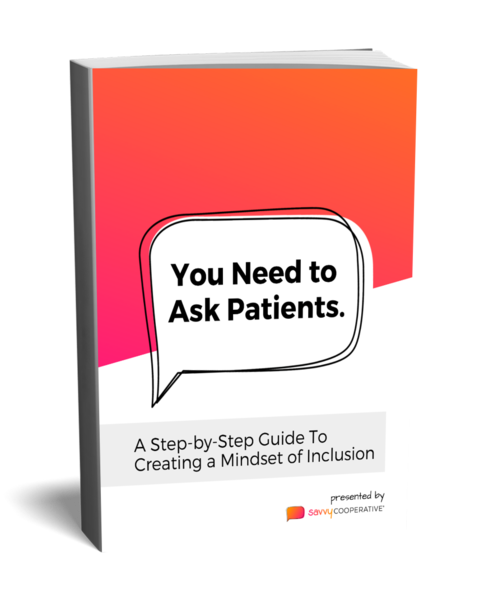Poorly-Fitted Business Model
Years ago, I met a founder creating a concierge service to help cancer patients. Those with cancer are juggling tests, treatments, appointments, and the stress and anxiety of their diagnosis. They'd love the extra help navigating the system, right? Well, at what cost?
When I asked her what her revenue model was, she said it was a subscription where the patient pays a few hundred dollars per month for the service. If only I could have seen what my face looked like when she said that. After I was done picking my jaw up off the floor, I asked her if she had spoken with any cancer patients about this. She sort of shrugged it off and said it would be worth it. Even some simple desk research would show you that 42% of cancer patients deplete their life savings in two years of diagnosis, and they are 2.65x more likely to file for bankruptcy.
Needless to say, the company no longer exists.
• • •

Poorly-Fitted Medication Delivery
As someone who started taking biologic medications when Enbrel hit the market some two decades ago, I have seen how over the years pharma companies have iterated on medication delivery. From daily injections to twice yearly infusions. Some patients choose their treatment based on how its mode of administration fits into their life.
That's why there is no medication delivery fail quite as impressive as that of Exubera, Pfizer's discontinued inhaled insulin product. Science and safety profile related to this mode of administration aside, patients had strong feelings about the sheer size of this inhaler device, which has been described as a tennis ball container.
Amy Tenderich, a diabetes patient, writes in a Healthline piece, “This is something you need to carry everywhere, to every bathroom, every bedroom, every time you walk out the door. You cannot be separated from it. I don’t think Pfizer made a product suitable for that at all…in the case of 24/7 diabetes devices, the design issue is SO MUCH MORE than just a pretty case.”
Sure, the device made it so that patients no longer needed to inject themselves, but they traded small discrete needles for a cumbersome contraption they had to carry with them everywhere.
Tenderlich continues, “Why do they just assume that we’re all so desperate to dump needles that we’ll put our lungs at risk, or risk unreliable dosing, or put up any amount of money for a new needle-free gadget no matter how bulky and inconvenient?”
This poorly-fitted product cost Pfizer $2.8 billion dollars to bring to market, making it one of the most expensive failures in drug development. Pfizer really did end up paying for it later.
• • •

Invest now to save later
While people hate losing money, they also hate losing time. You know what's the worst? Losing them both.
In clinical trials, every amendment can cause a significant delay, and delays mean more time before your therapy hits the market and starts generating revenue. In Therapeutic Innovation & Regulatory Science, Janssen's Senior Director of Benefit-Risk Assessment, Bennett Levitan and others (including patient engagement rockstars like Ken Getz and Bray Patrick-Lake) assess the financial value of patient engagement. The results of the research were as follows:
For a pre-phase 2 project, the cumulative impact of a patient engagement activity that avoids one protocol amendment and improves enrollment, adherence, and retention is an increase in net present value (NPV) of $62MM ($65MM for pre-phase 3) and an increase in ENPV of $35MM ($75MM for pre-phase 3). Compared with an investment of $100,000 in patient engagement, the NPV and ENPV increases can exceed 500-fold the investment. This ENPV increase is the equivalent of accelerating a pre-phase 2 product launch by 2½ years (1½ years for pre-phase 3).
Translation: working with patients beforehand to design the clinical trial can save you from costly amendments and get your product to market faster.
Design with care and fix things
This isn’t just a pharma problem. Too often startups are in such a rush to get to market that they don't bother getting meaningful user feedback (remember, in the healthcare industry you can’t just ask friends or colleagues and have any hope of capturing what actual patients think).
Many startup founders pitch investors with a powerpoint deck, get some money, and start building. Society has romanticized the "move fast and break things" mentality, but when it comes to healthcare we need to "design with care and fix things."
It’s a win-win when companies work with patients; companies can go on to create impactful, profitable businesses, and patients can get access to meaningful products that improve their lives and improve outcomes.
Whatever your bottom line is—patients, profits, or both—there’s a business case to ask patients.
——————————————————
About Us
Jen Horonjeff, PhD, is a life-long autoimmune disease patient and brain tumor survivor turned human factors engineer, academic, FDA advisor, and now the founder & CEO of Savvy Cooperative.
Savvy Cooperative helps the healthcare industry create patient-centered products and solutions by providing a marketplace for patient insights. Pharma and startups alike can connect directly with patients to participate in clinical, UX, and market research. Savvy’s unique co-op model leverages its members’ networks to quickly recruit diverse patients, and pays patients for sharing their insights! Savvy’s award-winning co-op has been featured in FastCompany, TechCrunch, The Boston Globe, and named one of the 50 Most Daring Entrepreneurs by Entrepreneur Magazine.
.png?width=300&height=69&name=SavvyCoop_HorizontalLogo_LargeFormat%20(1).png)
